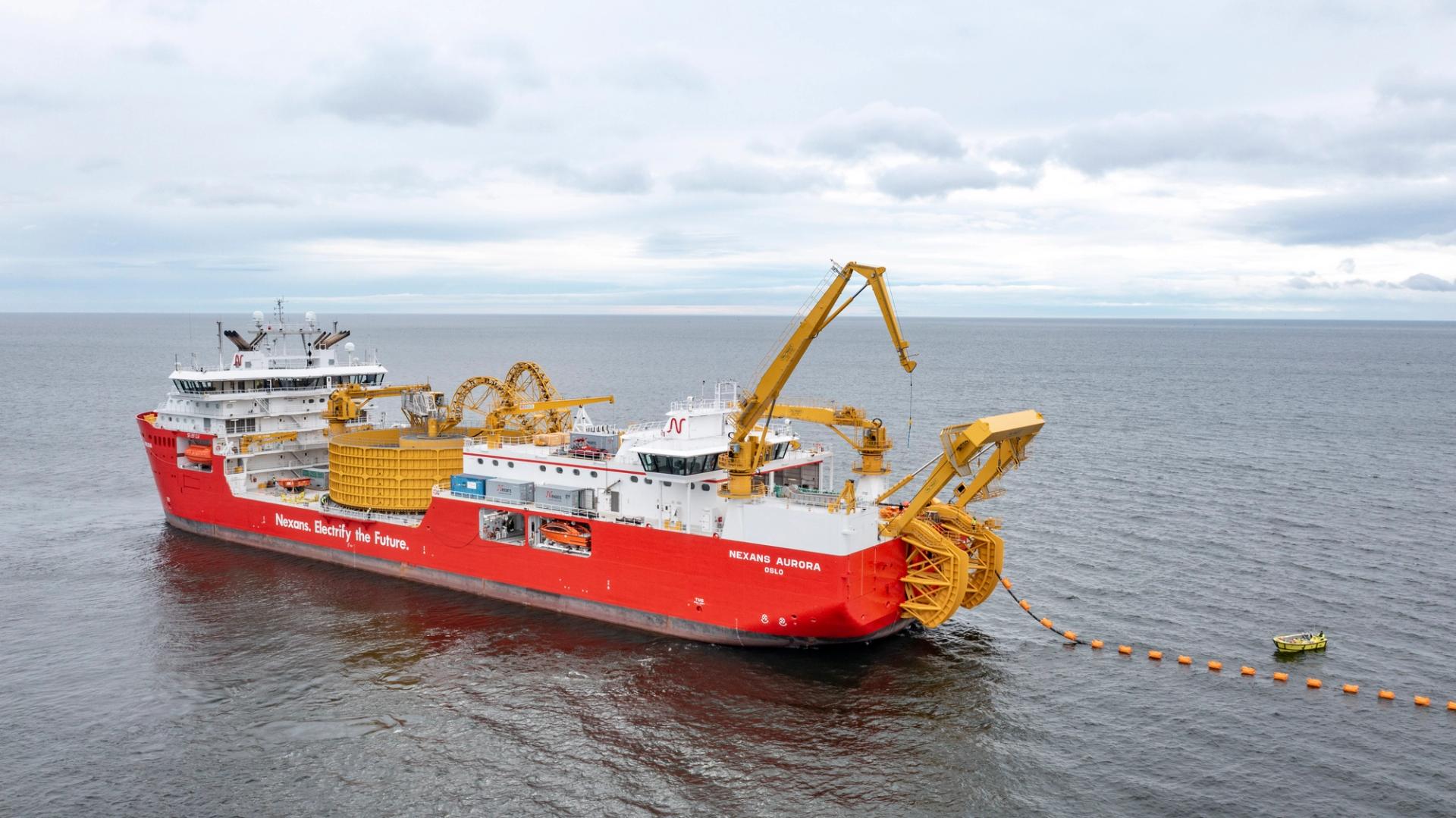How offshore wind turbines are connected to the grid

Transporting energy from offshore wind turbines
Offshore wind turbines are interconnected through an array of cables that transmit power to a central offshore substation. The substation acts as a hub, aggregating the energy produced by multiple turbines. From there, subsea export cables transport the power onshore, where it is distributed through the local grid connection system.
Wind turbines generate alternating current (AC), which the substation converts to a higher voltage to minimise loss during transmission. For long distances, the energy is converted to direct current (DC) using high-voltage direct current (HVDC) technology, which is more efficient over extensive underwater routes. HVDC links are now being utilised in major projects in both Europe and the US.
In recent years, interconnection strategies have evolved to optimise efficiency. Instead of separate links for individual wind farms, shared transmission networks, also known as meshed grids, are being developed. These systems reduce costs and streamline operations, providing resilience to outages.
Understanding grid connections
A grid connection refers to the physical and technical infrastructure required to connect offshore wind farms to the onshore electricity grid. This includes subsea cables, offshore substations and onshore converter stations. The integration process requires precise synchronisation to maintain grid stability, ensuring that the variable output of wind energy complements existing power sources.
Advanced technology, such as digital monitoring systems, are now integrated into grid connection systems to enhance reliability. They monitor voltage, frequency and grid demand, ensuring optimal operation even during fluctuating wind conditions.
What is an international shore connection?
As the name suggests, international shore connections facilitate energy transfer between offshore installations and multiple countries’ grids. This setup is especially relevant in Europe, where offshore wind farms can serve multiple nations simultaneously. For example, interconnectors such as the North Sea Link between the UK and Norway enable shared renewable energy resources, reducing dependency on fossil fuels.
These international connections often involve innovative engineering solutions, such as hybrid interconnectors that combine wind farm links with cross-border energy transmission systems. The designs maximise the utility of subsea cables, supporting energy security and regional collaboration.
Challenges and innovations
The construction of offshore wind infrastructure is not without challenges. Harsh marine conditions, high installation costs and environmental concerns are significant hurdles. However, innovations in power connection technologies, such as the development of floating and underwater substations, have addressed some of these issues.
Floating offshore substations, for instance, enable wind farms in deeper waters to connect efficiently to the grid. These substations are designed to withstand extreme weather while offering flexibility in placement, expanding the potential area for offshore wind development.
Future trends in offshore wind grid integration
Looking forward, the integration of offshore wind turbines into global grids will continue to evolve. For instance, the Norwegian Ocean Grid Project aims to connect offshore wind farms to an offshore grid, with a vision to help Europe to reach its climate targets. Norwegian companies, including wind farm developers, operators and suppliers of technology and solutions, are active in a number of subprojects.
Moreover, the push for green hydrogen production using offshore wind energy presents new opportunities for grid integration. By using surplus wind power to produce hydrogen, the industry can create a complementary energy storage solution, reducing grid strain and contributing to a cleaner energy future.


